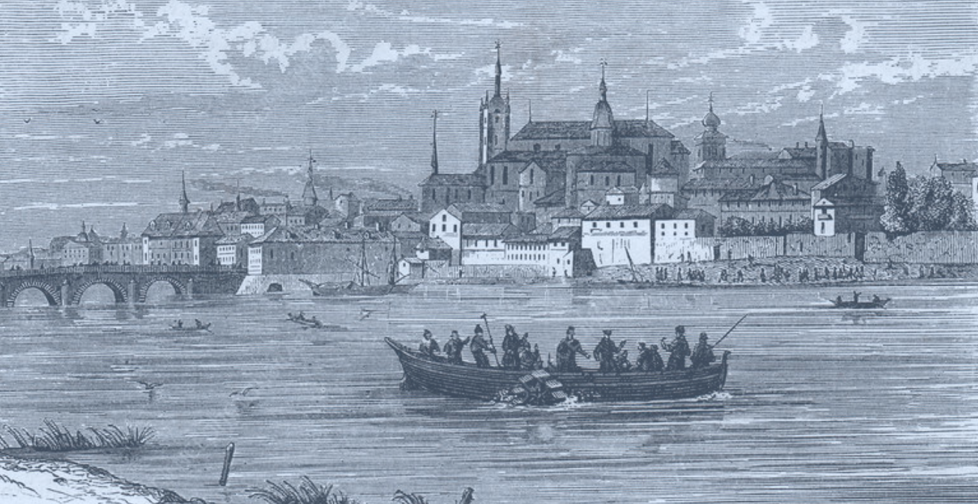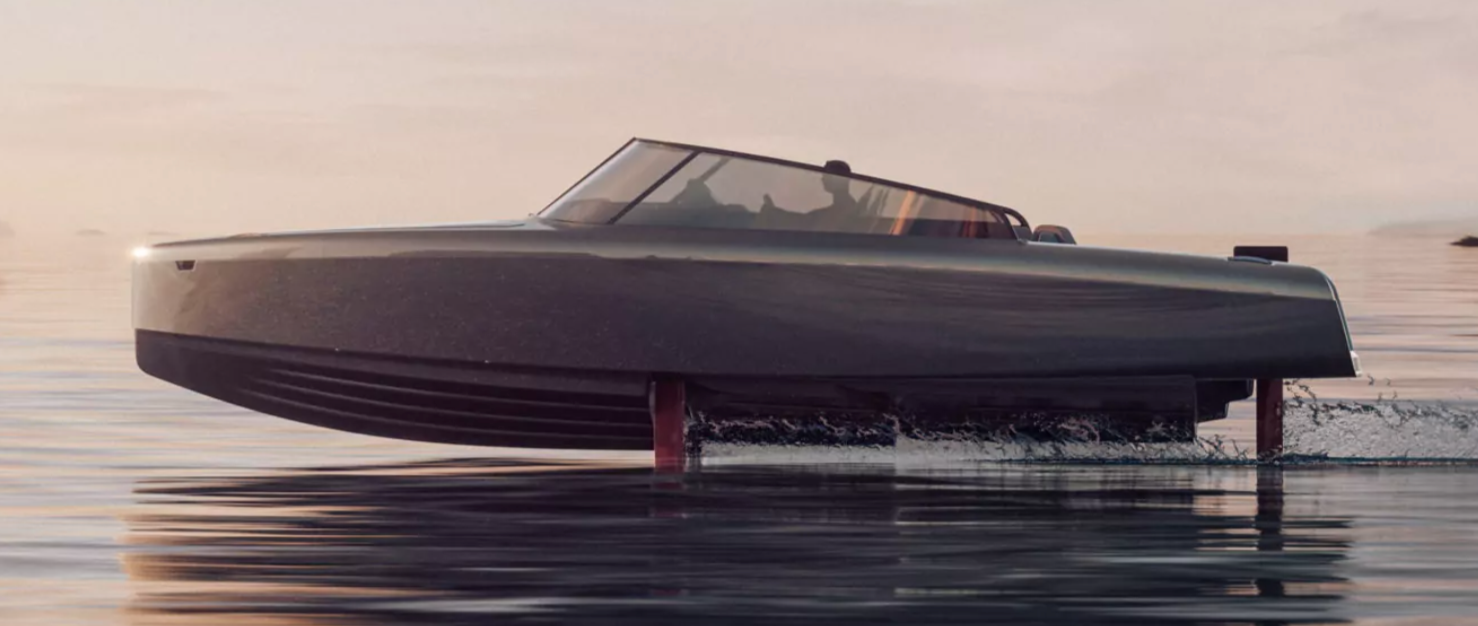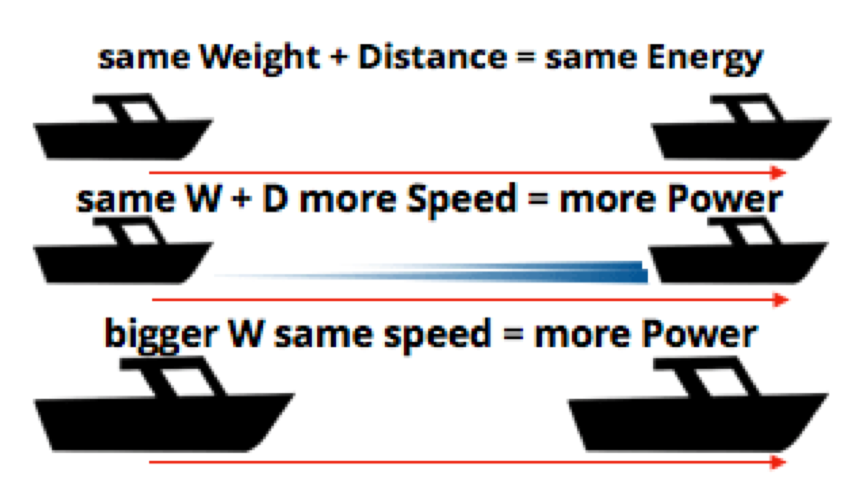About Electric Propulsion, Part 1: Physics: Energy, Force Work & Power

A Tutorial on Electrical Propulsion for Boats.
It’s helpful to have a quick review of physics because it helps in understanding the electricity aspect of propulsion.
In the end, the distance and speed you will be able to travel in your electric boat and the relationship of the two all come down to the constraints of physics: how much energy and power (which are two different things, as you will find out) it takes to move the weight of your boat against the resistance and force of the water.
Every day we all throw around phrases like ‘I have a lot of energy’ … ‘does the government have the power to do that’ … but when it comes to figuring out what you need for your boat, physics has very specific definitions for those terms.

ENERGY: Energy is the ability of something to do work.
FORCE: Is a push or pull upon an object resulting from an interaction with another object.
WORK: Work is done when energy is transferred to an object that causes movement of the object.
POWER: Power is the rate at which the work is done.
The equations are:
Work = Force X Distance
Power = Work ÷ Time.
- Work is measured in Joules.
- Energy is measured in Joules.
- Force is measured in Newtons and is related to the weight of the thing that is being pushed or pulled.
- Distance is measured in meters.
- Power is measured in Watts.
- Time is measured in seconds.
The reason energy and work are both measured in Joules is that the work is defined as the thing that is accomplished through the transfer of the energy, so they are measured the same way.

Measuring the Energy Required for Given Work
The important concept here is that moving the set weight of your boat at a set distance will always require the same amount of energy – the same amount of work (in calm water). If you want to move it the same distance faster, or move a bigger boat the same distance it will require more power:
Moving a boat through waves is essentially the same as moving a heavier boat, you’re overcoming the force of the waves, so you require more force and power to move at speed. You already know this intuitively, but it is good to know how it is all measured, as you’ll see when it comes to batteries.
